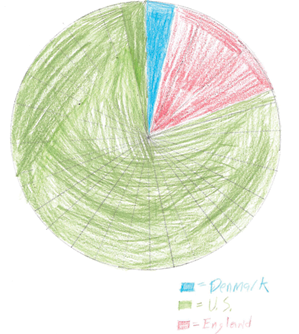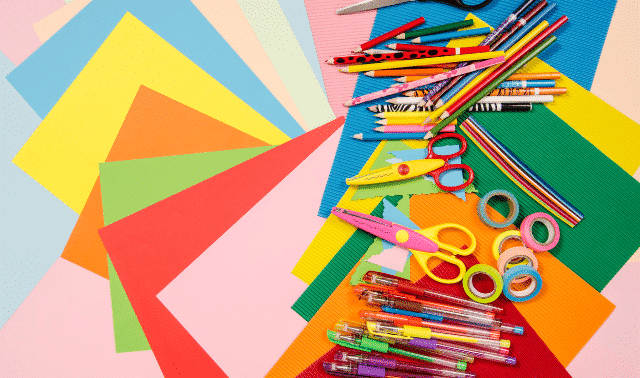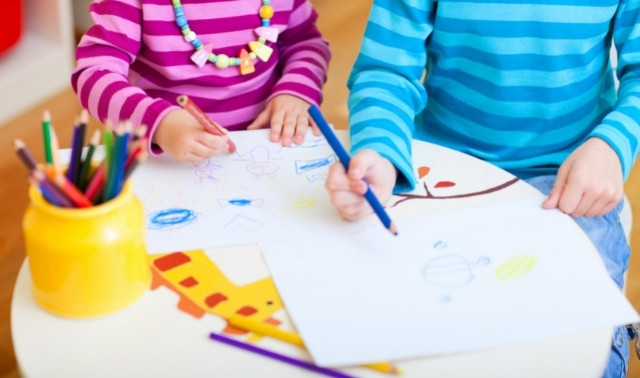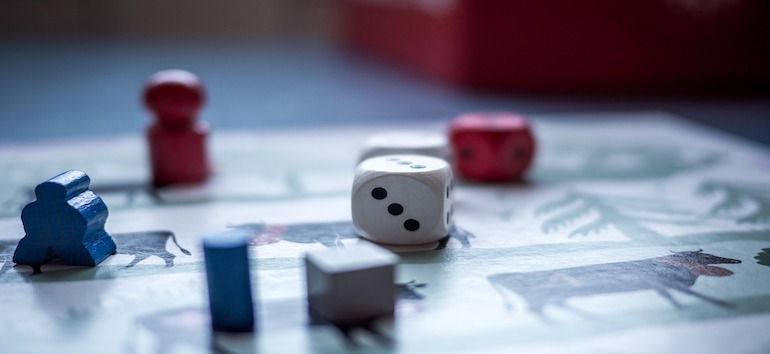Sign up for the Family Tree Newsletter! Plus, you’ll receive our 10 Essential Genealogy Research Forms PDF as a special thank you.
Get Your Free Genealogy Forms
"*" indicates required fields

People often ask how I got so interested in family history. The truth is this: My parents encouraged it from the time I was young. Our family vacationed at historic sites and cemeteries. We never made it to Disney World. We worked in the vegetable garden to the sounds of my parents’ stories about their own childhood chores.
So for this article on family history projects you can do with your children or grandchildren, I turned to my mom, who’s now a professional genealogy librarian. She and my dad are the inspiration for all the ideas I’ve tried with my own children.
You don’t have to be a professional genealogist—or raise one—to teach family history to a young person. What you do need are time, passion for the past, and creative, kid-tested activity ideas. You’ve already got the first two. Here, my mom and I suggest seven activities, illustrated by some of our favorite experiences. Use them to make memories with the kids you love.
1. Use props to tell a story.
My mom’s dad was a master ice cream maker at Sinton Dairy in Colorado Springs, Colo. He concocted his own flavors in large steel vats—the more ingredients the better! Sometimes he even brought home samples.
I shared this sweet bit of family history with my kids over a scoop of ice cream. Then I took a cue from my grandfather and added more flavors to my storytelling. First was a Sinton Dairy company brochure that my Aunt Judie found among family papers, showing Grandpa in his white dairy uniform at the mixing vat. Next, Uncle Jim’s snapshot of the wooden ice cream maker Grandpa used at home. The cherry on top of the story was a 1959 city directory listing Great-grandpa’s employment at the dairy. Now the kids want their own ice cream maker to re-create Grandpa’s recipes.
What ingredients can you use to enhance a family story? Pull out original documents such as letters or diaries. Consider protecting them in archival sleeves before letting a child touch. Less fragile and easy to find online may be entries in city directories, censuses and yearbooks; subscription site Ancestry.com has big collections of all three.
Share family artifacts or put them on display: a sports trophy, military medal, artwork or quilt. My dad has a post office box from Dempsey, Idaho, where his grandpa McClellan was the postmaster. In his “heirloom” raspberry bed, he shares berries with his grandchildren, along with memories of picking his grandfather’s raspberries. The key is to tell the stories that go along with these heirlooms when opportunities arise.
If you don’t own family artifacts, look for substitutes at flea markets, antique stores, online auction sites and thrift stores. My dad displays a few cast-iron shoe forms in honor of his English shoe-making ancestors. We’ve found Sinton Dairy milk bottles and caps up for bid on eBay. My young cousins express pride in their mother’s DellaCroce heritage by sporting Italian soccer shirts.
2. Tour a cemetery.
Whenever I travel West with my children, we visit my grandparents’ graves in Woodland Park, Colo., along with my uncles John and Jim, and cousins who all live nearby. Cemeteries are easy places to take children, and they spark conversations about ancestors and otherwise honor past generations.
When planning a trip to a cemetery, try to stop by in advance to ensure it’s safe and publicly accessible (some are on private land). Prepare children for visiting ancestral graves by sharing memories, mementos or photos beforehand or on the way there. Let them try to locate family graves themselves, dropping hints as needed about the markers’ location or appearance. Use your mobile device to take photos and upload them to your online tree, Find A Grave or BillionGraves. Decipher interesting-looking inscriptions and share thoughts about life, death or loved ones.
Stay near children in the cemetery—they’re inclined to explore. Coach them on cemetery etiquette and safety. Tombstones shouldn’t be climbed, or graveside plantings and mementoes touched. Boisterous behavior and running may disturb other visitors. Steer clear of damaged stones, broken glass, weeds, snakes and other critters.
My family occasionally visits cemeteries just to image tombstones for BillionGraves. You can perform other services, too. Call ahead to the cemetery office; staff may appreciate your help placing flags on veterans’ graves, weeding around stones or cleaning the grounds. Don’t do anything that may deface or mar a tombstone, such as applying any substances to the stone (other than water in a spray bottle) or scraping off dirt with any tool other than a wooden popsicle stick.
3. Interview a loved one.
Older relatives often share stories with kids that they don’t think to tell adults. My mom, as a child, sat with her Grandma Hall and labeled Grandma’s childhood photo album. Mom asked questions that prompted stories, including one in which a young Grandma Hall helped put out a fire on the roof of her house by running up and down a ladder with wet laundry.
A well-prepared child can preserve family memories by recording an interview with a grandparent or another older relative. With the child’s input, choose a relative who would be fun to interview and who hears and speaks clearly. Select photos the child can use to prompt a conversation and/or write down questions of most interest. Try to limit questions to one topic or time period. Set up an interview time, or coach older children and teens to contact the relative and schedule the interview themselves.
Help the child record in-person interviews with the audio or video recorder on your mobile device. (This is where a modern kid’s affinity for technology will come in handy.) Choose a quiet location with good lighting (for a video interview), and position the device on a steady platform close to those being recorded. For best results, record in landscape position. Practice ahead of time and test your equipment before the real deal.
Share a video, with consent of the subject (and the child’s parent, if that’s not you) via such sites as Facebook, YouTube or Vimeo. If you record with the free MyHeritage app or FamilySearch Family Memories app (both for iOS and Android), you can automatically archive interview files to your relatives’ online tree profiles. Items recorded with an app and attached to living people’s profiles aren’t always accessible to others, so download those interview files from the sites to share. (Learn how to do all this on the MyHeritage app and on the FamilySearch Memories app.)
4. Make an ancestor pie chart.

Last year for Christmas, all three of my children asked for autosomal DNA tests. They wanted to see their ethnic pie charts. Specifically, my son Alex wanted to know how much “Viking blood” he has.
These DNA pie charts aren’t an exact science, but they’re a hit with many kids. Autosomal tests are available from AncestryDNA, FamilyTreeDNA, MyHeritage DNA and 23andMe.
When results arrive, look at the ethnic pie chart together. Read the site’s definitions of ancestral populations and explain that these are imprecise. This caution may be lost on the young, though. Alex triumphantly claimed his 55% Scandinavian heritage as proof of his “Viking blood,” despite being told this wasn’t necessarily true.
A few caveats for testing children: Don’t test a grandchild or other child who isn’t yours without permission from her parents. Consider possible effects on the child of discovering unexpected information about biological roots. Have an adult manage the test results and any contact with genetic matches.
No-Test, DIY Ancestor Pie Chart
If you opt not to test, use this free, do-it-yourself pie chart option that’s based on the child’s family tree—and comes without genetic surprises:
- List all eight great-grandparents and their countries or states of origin, if known. (Or do all 16 great-great-grandparents or 32 third-great-grandparents).
- Tally the birthplaces and assign a color to each.
- Trace a large circle on a piece of paper. Divide the circle into eight pie-shaped sections (or 16 or 32). Each section represents the birthplace of one ancestor.
- Shade each section with the assigned color and group like-colored sections together.
- Create a key defining the colors and places.
Alex made his own pie chart based on 32 ancestral birthplaces and compared it to his genetic results. He was disappointed that only one ancestor had a Scandinavian birthplace (26 of them were born in the United States). I explained about random genetic inheritance, declining DNA from distant relatives, and the 26 US-born ancestors with still-unknown origins. He frowned and opted to stick with his newfound Viking identity.
5. Explore old technology.
My sister-in-law, Michele Gourdin McClellan, once brought a vintage typewriter to a McClellan family party to let the grandkids try it. She explained the carriage return, carbon paper and why you can’t hit more than one key at a time. Then a little one wondered, “Where’s the delete key?” The event was such a hit, Michele repeated it with her sister Emily’s children, Elizabeth, 6, and Jacob, 4. They loved it too, so Emily jumped on the bandwagon, pulling out her own vintage cameras for them to try.
Exploring old technologies can awaken a child’s interest in the past, especially technologies connected to your family history. My grandma and great-grandma were both telephone operators. An old rotary telephone and operator training films on YouTube will explain their work (search YouTube for telephone operator 1940…1950). My mom’s dad was a ham radio operator, and while we don’t have any radio parts, I’ve introduced my boys to Morse code.
Historical Transportation
If communication technology isn’t an interest, take a ride in historical transportation. My kids have ridden a paddleboat on the Mississippi River, not far upriver from where their ancestors took a flatboat to their new homestead in Missouri in 1859. Another ancestor was a brakeman on a West Virginia railroad; we’ve ridden a steam locomotive up into those same mountains.
Old-time transportation options that might fit your travel plans include riding a Model T at Greenfield Village in Dearborn, Mich., or a horse-drawn canal boat at Roscoe Village in Coshocton, Ohio. Or explore the Queen Mary, a former passenger liner—albeit one more luxurious than most immigrants experienced—now docked in Long Beach, Calif.
6. Write like your ancestors did.

Today, older children text and tweet, but may not know how to read or write in the cursive style of their ancestors. Does it matter? Well, it means they can’t read the original US Constitution or a letter from Grandma.
Many children will enjoy drawing curvy, embellished-looking letters, especially if you hand them a quill or fountain pen. Start by customizing a traceable worksheet with each child’s name, which they can trace or copy. Do this for free at KidZone, where you can choose a theme and click Cursive font. Scroll down and enter the child’s name on one or more lines, then click Make Tracer Page. On the same web page, you can print cursive alphabets, both lower and upper case.
Order fountain or quill pens online, and don’t forget the ink. You even could make your own quill pen, following directions from this video. (This involves a pen knife, so isn’t a suitable activity for children.) Your best starter option may be a disposable fountain pen; Thornton’s Office Supplies brand sells a 12-pack in a rainbow of colors (find them on Amazon.com). Seneca, at 10, found the quill pen awkward, but loved writing with her purple fountain pen.
Decipher Old Script
After being introduced to writing cursive, older children are more prepared to learn to decipher old script. Take turns reading a handwritten letter or journal entry that’s not too old or different from modern cursive. Then try having them read an old marriage record or other genealogical document about your family.
Learn more about a variety of old handwriting scripts with the free Script Tutorial: Making Sense of Old Handwriting or Reading Early American Handwriting by Kip Sperry (Genealogical Publishing).
7. Do old-fashioned chores and handicrafts.
My parents raised me and my five brothers on country acreage. Traditional chores were part of daily life. We gardened, hung wash on a clothesline, canned fruit and tapped maple trees for syrup. Even without having lived this kind of lifestyle, you can do some classic chores with kids.
Share memories of childhood chores when working around the house with children. Grandma Hall described to my young mom one day how it was to wash dishes when she was young: pumping and hauling water, heating it on a stove and dumping it afterward. My mom never forgot—and never complained about rinsing dishes to Grandma Hall again. You can also share what you know about your ancestors’ work routines (“Instead of vacuuming, they took the rugs outdoors and beat them”).
Use old household tools as visual aids for explaining jobs to kids. My parents kept a washboard in their laundry room, used occasionally on football uniforms. Old flatirons sat near the ironing station. A manual push lawn mower was pressed into service when the regular mower was in the shop or when a youngster wanted to do yardwork.
Handicrafts
Teens and older children may enjoy handicrafts that used to be part of everyday work: sewing, knitting, soap-making, candle-making, woodcarving. Look for inspiration, tutorials and supplies in crafting or specialty stores, on Pinterest and on YouTube. Consider safety and the child’s likely ability to execute any project. My mom, who used to be a history museum educator, enjoys dipping candles with kids and recommends The Everything Candle Making Book by M. J. Abadie (Everything).
My siblings and I—and now my children—all have flexed muscles at living history museums. We’ve hauled water, spun yarn, wound rope, stacked wood, pulled a handcart, beat a rug, gathered eggs and pretended to shoe a horse. My kids rate Conner Prairie in Fishers, Ind., as the most hands-on and kid-friendly. Also visit Time Travelers and the Association for Living History, Farm and Agricultural Museums for recommendations.
Whatever family history projects you do with the kids, keep it fun and simple. Ramp up the intensity of an activity only when children show continuing interest and enthusiasm. Maybe someday they’ll relive them, with their own children, as I’ve done. One last thought, to parents who are now planning history-themed family vacations: You don’t have to skip Disney World altogether; just stop at Colonial Williamsburg on the way home.
About the Authors
Contributing editor Sunny Jane Morton also credits her dad for her love of family history. He’s indexed nearly 1.5 million names as a FamilySearch volunteer and often shares screenshots of unusual entries. Cheryl Felix McClellan is the mother of six, grandmother of 14 and genealogy librarian for the Geauga County (Ohio) Public Library System.
Related Reads
A version of this article originally appeared in the September 2017 issue of Family Tree Magazine. Last updated: June 2025









